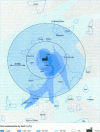Abstract
The area around the Pribram lead smelter has been recognized to be heavily contaminated by lead (Pb). In the early 1970s, several episodes of livestock lead intoxication were reported in this area; thereafter, several epidemiological and ecological studies focused on exposure of children. In contrast to earlier studies, the recent investigation (1992-1994) revealed significantly lower exposure to lead. From 1986-1990, recorded average blood lead levels were about 37.2 micrograms lead (Pb)/100 ml in an elementary school population living in a neighborhood close to the smelter (within 3 km of the plant). The present study, however, has found mean blood lead levels of 11.35 micrograms/100 ml (95% CI = 9.32; 13.82) among a comparable group of children. In addition to blood lead, tooth lead was used to assess exposure among children. Statistically significant differences (p < 0.05) were observed between the geometric mean tooth lead level of 6.44 micrograms Pb/g (n = 13; 95% CI = 3.95; 10.50) in the most contaminated zone and 1.43 micrograms Pb/g (n = 35; 95% CI = 1.11; 1.84) in zones farther away from the point source. Both biomarkers, blood and tooth lead levels, reflect a similar pattern of lead exposure in children. This study has attempted a quantitative assessment of risk factors associated with elevated lead exposure in the Czech Republic. Content of lead in soil, residential distance from the smelter, consumption of locally grown vegetables or fruits, drinking water from local wells, the mother's educational level, cigarette consumption among family members, and the number of children in the family were factors positively related (p < 0.05) to blood lead levels. The resulting blood lead level was found to be inversely proportional to the child's age.
Full text
PDF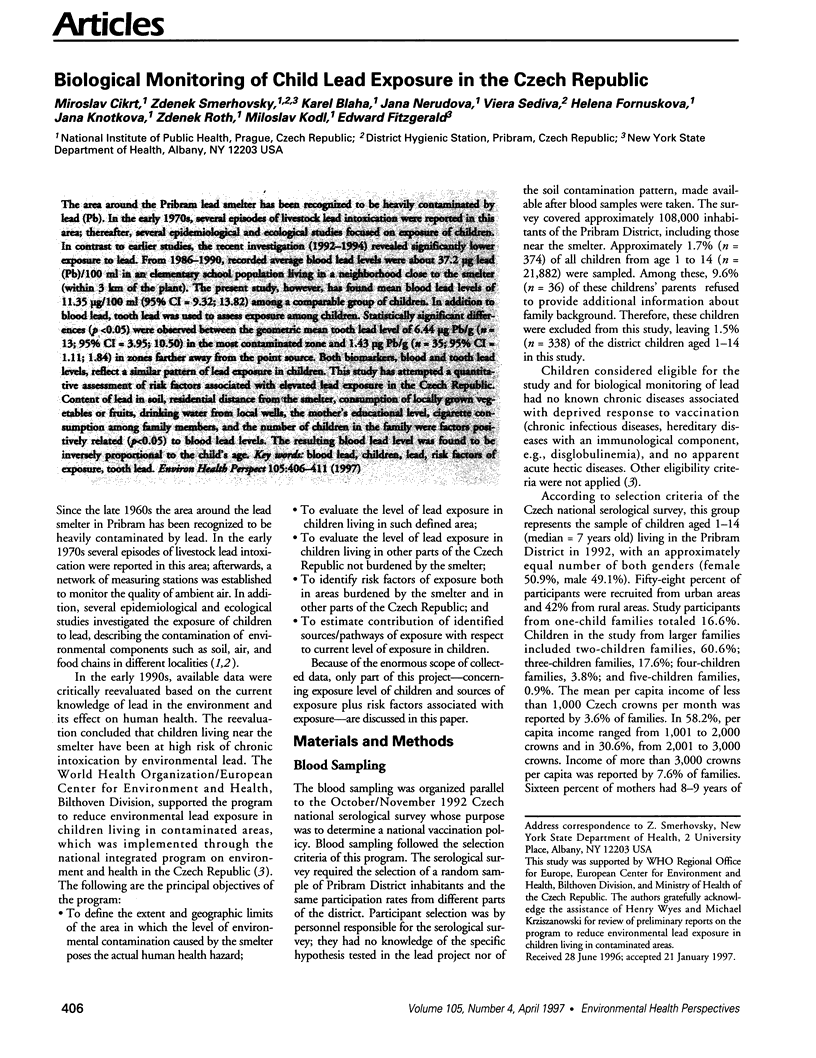
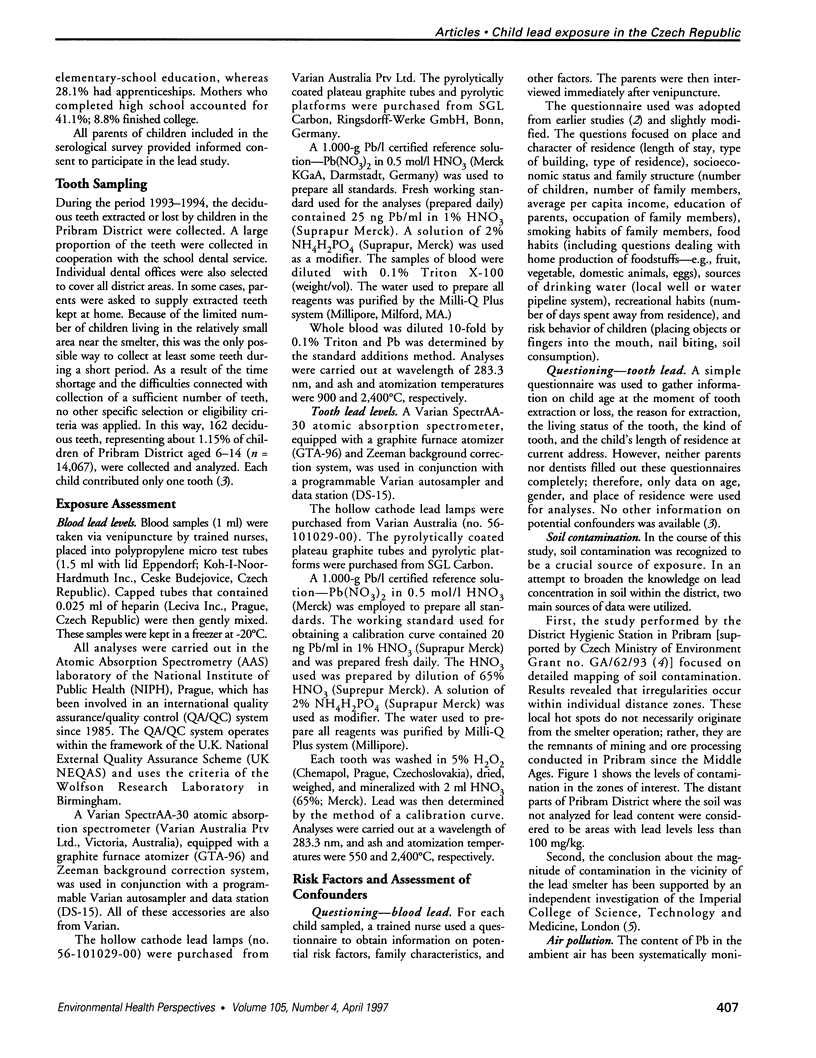
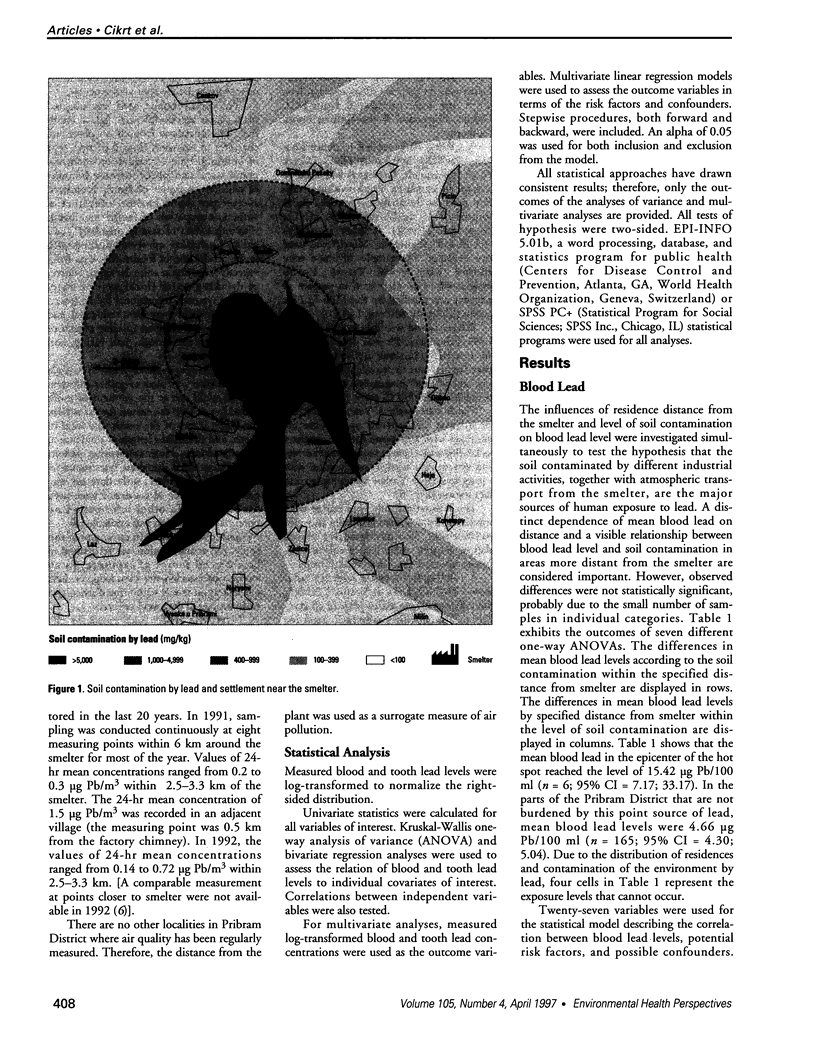
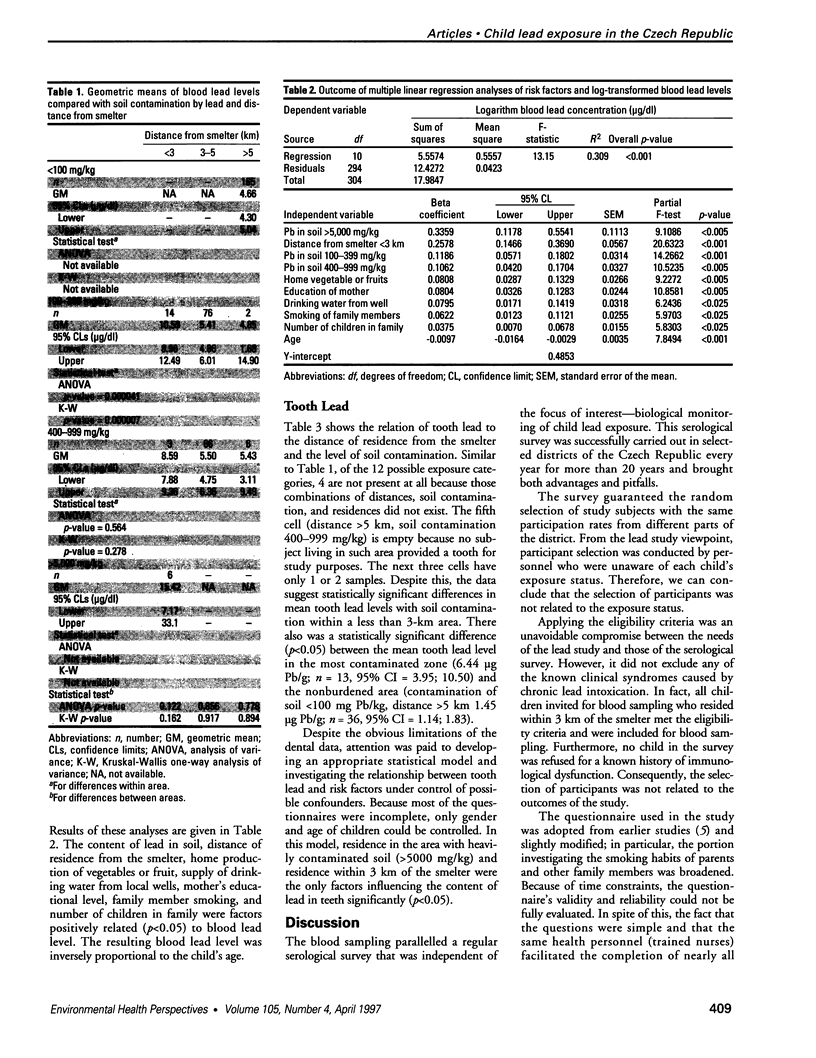
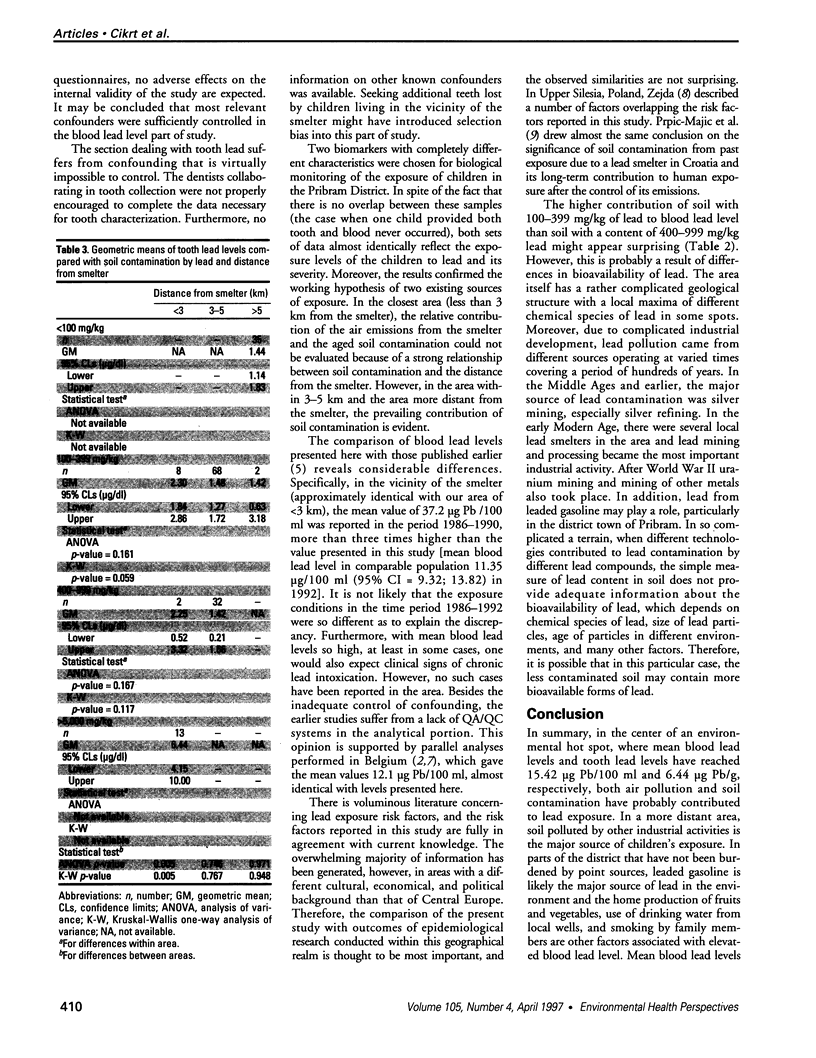
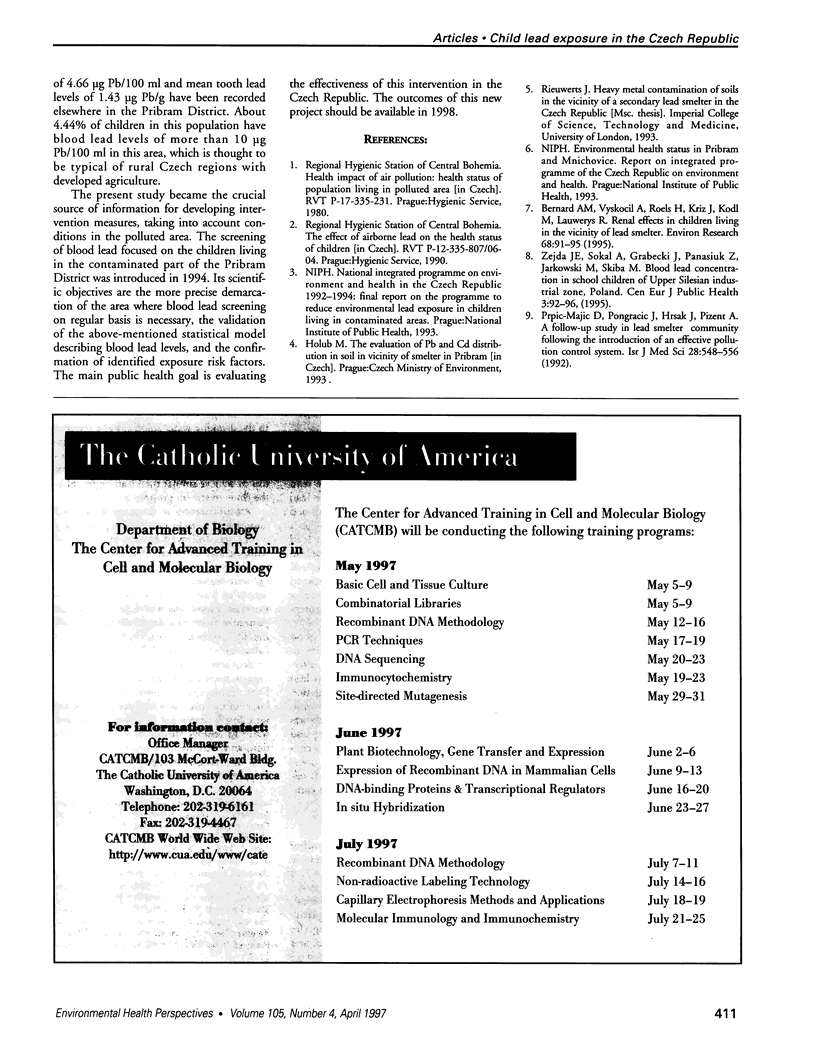
Images in this article
Selected References
These references are in PubMed. This may not be the complete list of references from this article.
- Bernard A. M., Vyskocil A., Roels H., Kriz J., Kodl M., Lauwerys R. Renal effects in children living in the vicinity of a lead smelter. Environ Res. 1995 Feb;68(2):91–95. doi: 10.1006/enrs.1995.1012. [DOI] [PubMed] [Google Scholar]
- Prpic-Majic D., Pongracic J., Hrsak J., Pizent A. A follow-up study in a lead smelter community following the introduction of an effective pollution control system. Isr J Med Sci. 1992 Aug-Sep;28(8-9):548–556. [PubMed] [Google Scholar]
- Zejda J. E., Sokal A., Grabecki J., Panasiuk Z., Jarkowski M., Skiba M. Blood lead concentrations in school children of Upper Silesian Industrial Zone, Poland. Cent Eur J Public Health. 1995 May;3(2):92–96. [PubMed] [Google Scholar]



